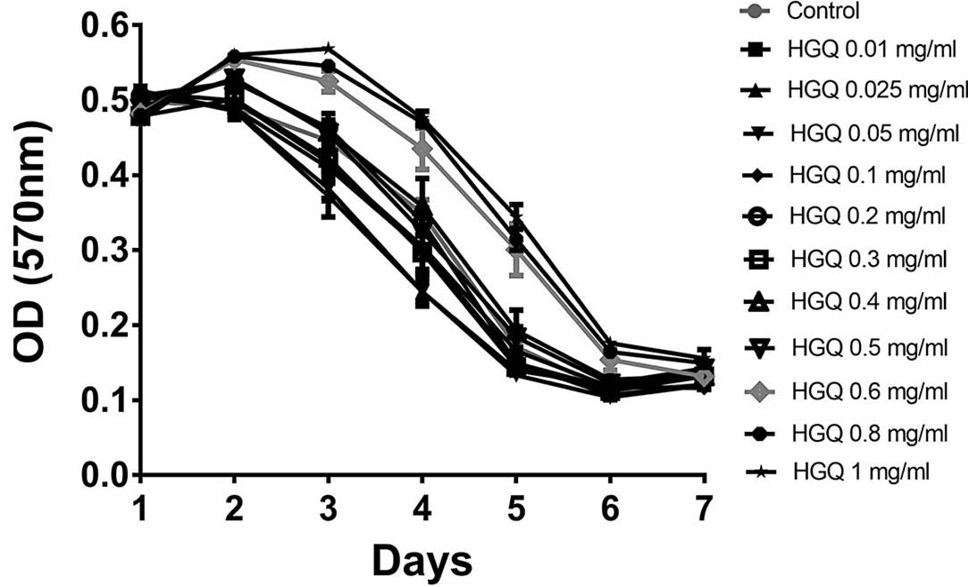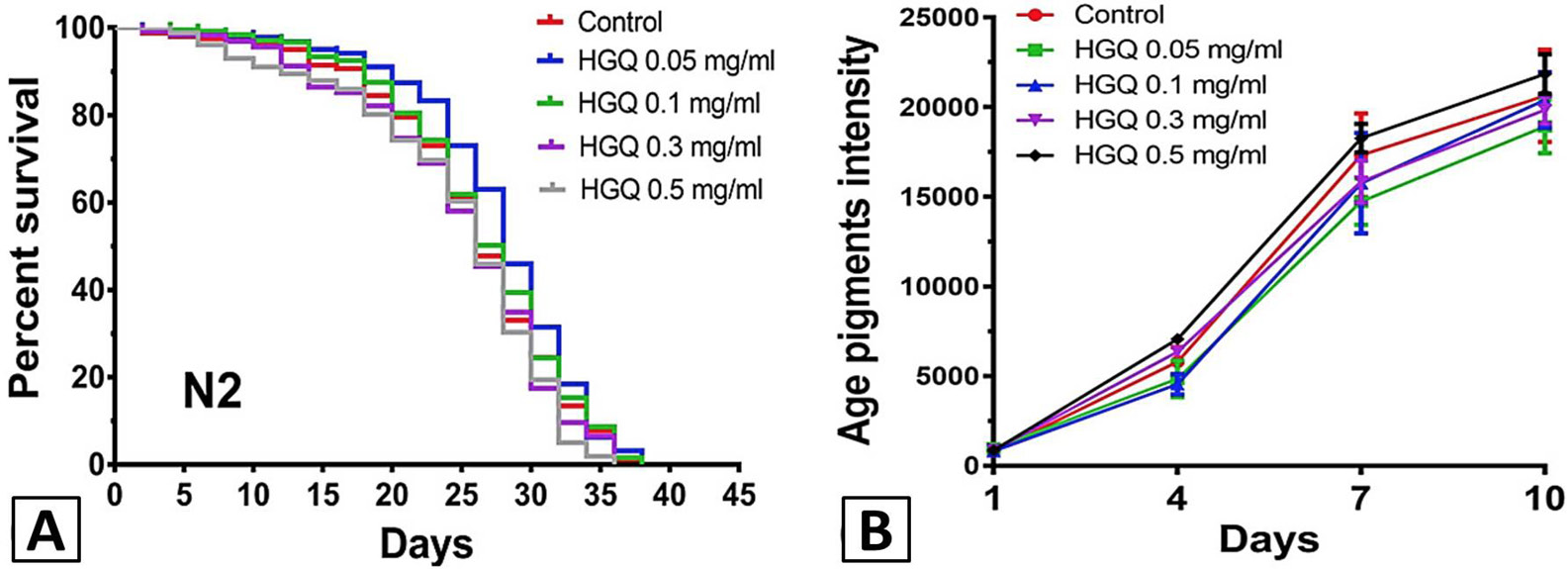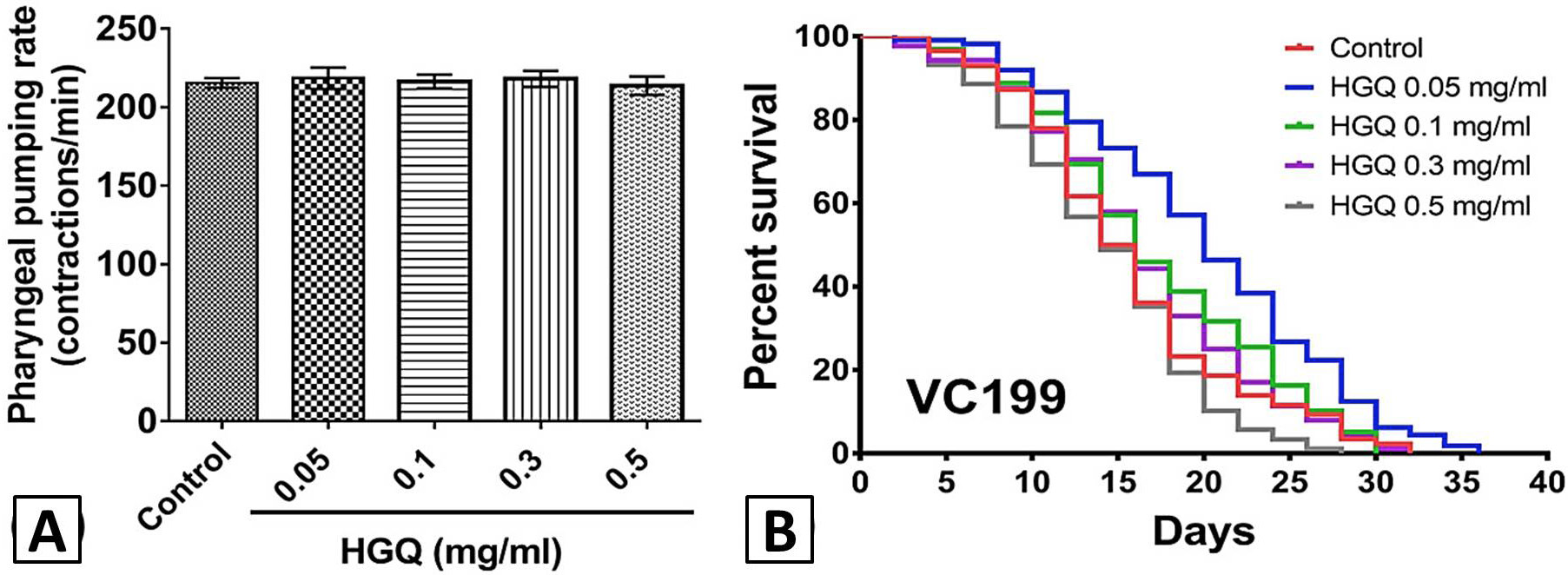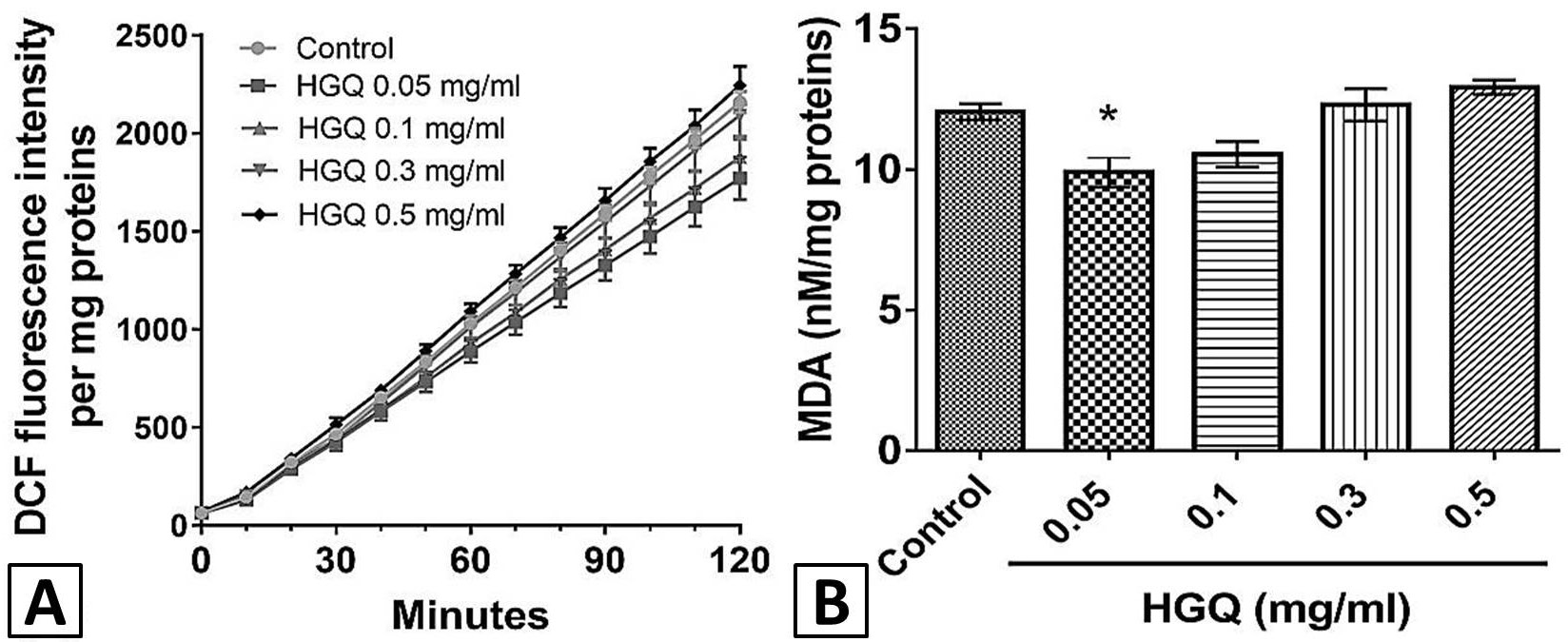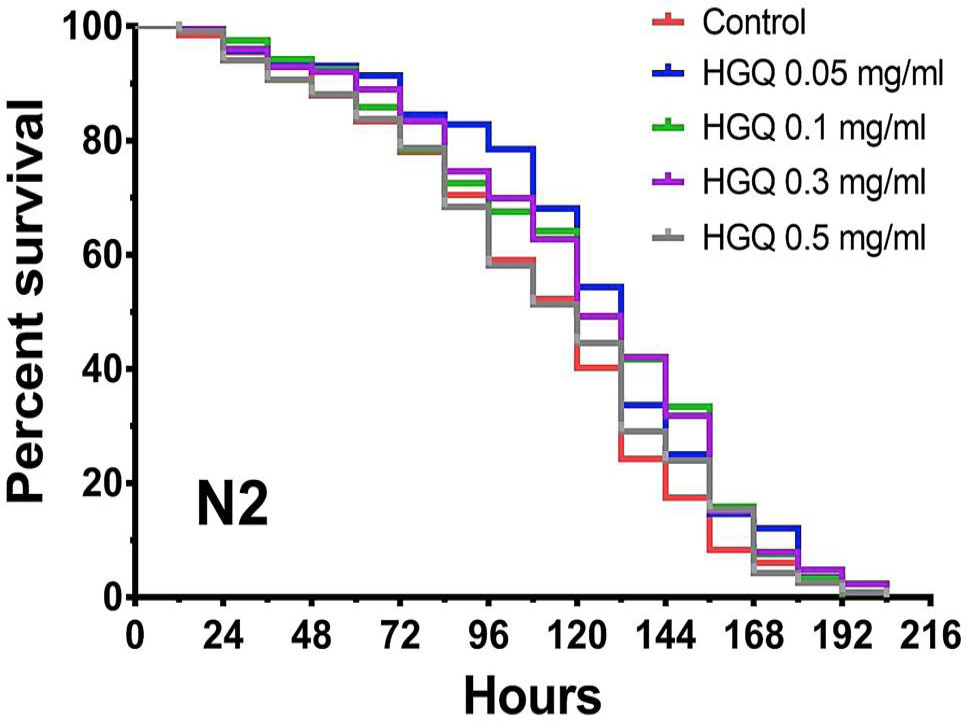Anti-Aging Effects of Lycium ruthenicum Murr. Granules in Caenorhabditis elegans
Anti-Aging Effects of Lycium ruthenicum Murr. Granules in Caenorhabditis elegans
Ju Zhang1,2, Dong-Sheng Jia3, Shi-Hao Zhao1,2, Xiao-Liang Xie3, Hong Chen4 and Hai-Feng Li4,*
Influence of HGQ on the food clearance of N2 nematodes. Synchronized L1 nematodes were incubated at 20 °C in 96 wells plates with or without HGQ at the indicated concentrations, and the absorbance at 570 nm was measured daily for 7 days. Results are representative of three independent experiments, and data are shown as mean ± SD of ten parallel wells with 100–150 nematodes per concentration.
Influence of HGQ on the senescence of N2 nematodes. Synchronized nematodes were incubated at 20°C in 96 wells plates with or without HGQ at the indicated concentrations, and the representative Kaplan-Meier survial curves are shown from three independent experiments with about 100 animals in each group (A). The fluorescence intensity of lipofuscin in adult nematodes was detected from day 1 to day 10 by a microplate reader at 355 nm excitation and 460 nm emission, and data are shown as mean ± SD of ten parallel wells with 100–150 nematodes per concentration (B).
Influence of HGQ on the calorie restriction pathway in nematodes. Synchronized N2 nematodes were incubated at 20°C in 24-well plates with or without HGQ at the indicated concentrations, and the pharyngeal pump rate was measured on NGM plate at day 4 (A). Data are shown as mean ± SEM of four independent experiments with 40 nematodes assays for each treatment (A). Synchronized sir-2.1 mutant nematode VC199 were incubated at 20 °C in 96 wells plates with or without HGQ at the indicated concentrations, and the representative Kaplan-Meier lifespan curves are shown from three independent experiments with about 100 animals in each group (B).
Influence of HGQ on the oxidative stress level in paraquat-treated N2 nematodes. Synchronized young adult nematodes were pretreated with or without HGQ at indicated concentrations at 20°C for 48 h prior to exposure to 10mM paraquat for 48 h. Approximately 1500 nematodes were collected and homogenized in PBST buffer. The relative level of ROS (A) and MDA content (B) were determined with DCF fluorescence Assay Kit and Lipid Peroxidation MDA Assay Kit. The results werw normalized by protein cotent. Data are shown as mean ± SEM of three independent experiments, and statistical significance is determined by one-way ANOVA followed by Tukey’s post hoc test. *p<0.05.
Influence of HGQ on the survival rate of paraquat-stressed N2 nematodes. Synchronized nematodes were treated with or without HGQ at indicated concentrations at 20°C for 24 h prior to exposure to 60mM paraquat, and the live/dead nematodes (~100 for each treatment) were scored every 12 h until all dead. The representative Kaplan-Meier survival curves are shown from three independent experiments, and data are compared for significance by the log-rank test.
Influence of HGQ on the antioxidant enzyme activity in N2 nematodes. Synchronized nematodes were prepared as in Figure 4 until lysis. The SOD (A), CAT (B) and GPx (C) activity were determined, respectively with Total Superoxide Dismutase Assay Kit, Catalase Assay Kit and Total Glutathione Peroxidase Assay Kit. The results were normalized by protein content. Data are shown as mean ± SEM of three independent experiments, and statistical significance is determined by one-way ANOVA followed by Tukey’s post hoc test. *p<0.05.







